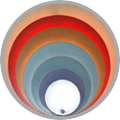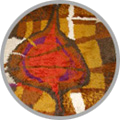Jo Hammerborg – the man who made Fog & Mørup great
 Jo (Johannes) Hammerborg was born on 4 February 1920 in Randers, Denmark. After completing high school education he trained as a silversmith from 1942 to 1943, and in 1944 enrolled at Copenhagen’s Kunstakademiet, the prestigious Royal Danish Academy of Fine Arts. In 1949 he began work as a silversmith at Georg Jensen, where he remained for the next eight years.
Jo (Johannes) Hammerborg was born on 4 February 1920 in Randers, Denmark. After completing high school education he trained as a silversmith from 1942 to 1943, and in 1944 enrolled at Copenhagen’s Kunstakademiet, the prestigious Royal Danish Academy of Fine Arts. In 1949 he began work as a silversmith at Georg Jensen, where he remained for the next eight years.
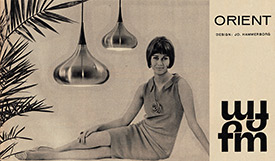 In 1957 Hammerborg became head of design at Danish lighting producer Fog & Mørup. His time in this role was to prove the most successful period in the company’s 80-year history both artistically and commercially as he completely redefined the F&M brand with a new modernist aesthetic, imposed a consistent branding style and introduced stringent quality standards for the company’s output. From the smallest components making up the lamps to their labelling, packaging, advertising and showroom display, every facet of the business came under Hammerborg’s exacting eye for form and detail.
In 1957 Hammerborg became head of design at Danish lighting producer Fog & Mørup. His time in this role was to prove the most successful period in the company’s 80-year history both artistically and commercially as he completely redefined the F&M brand with a new modernist aesthetic, imposed a consistent branding style and introduced stringent quality standards for the company’s output. From the smallest components making up the lamps to their labelling, packaging, advertising and showroom display, every facet of the business came under Hammerborg’s exacting eye for form and detail.
 Hammerborg was also a prolific designer, and the first six years of his 23-year reign at Fog & Mørup were the most creative of his career. In this period, from 1957 to 1963, he put into production 24 of the approximately 60 lights he would eventually design for the company.
Hammerborg was also a prolific designer, and the first six years of his 23-year reign at Fog & Mørup were the most creative of his career. In this period, from 1957 to 1963, he put into production 24 of the approximately 60 lights he would eventually design for the company.
The single most important influence on Hammerborg’s designs came from his training as a silversmith and his exposure to the work of designers such as Henning Koppel at Georg Jensen. This is what sets Hammerborg apart from other Danish lighting designers of the period, nearly all of whom came to lighting design from a background in architecture. Hammerborg's silversmith's eye and sensibility shines out in every lamp he designed – in the understated organic beauty of his forms, in his exceptional attention to detail, in his use of the highest-quality materials and finishes, in the simplicity of his constructions and his minimising of functional elements such as studs, joints, switches, and in the way he understood that barely visible and even concealed details influence the overall design aesthetic.
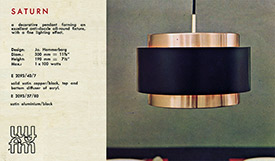 Hammerborg's earliest creations included several members of a group of lights – which for convenience we call the Saturn series – in which he expressed his most easily recognised and most widely imitated design concept. The basic notion was a structure of two concentric cylindrical bands, and he explored this form in many varying proportions of height and width through the 1960s and 1970s. Early lights in the series – mostly in copper and black lacquered metal (itself a widely copied Hammerborg combination) – included the eponymous Saturn, the Tunika, Juno, Dano, Eiffel, Etna, and the Corona, in which the core became conical in form instead of cylindrical. The Sera first appears in the record in 1968 and is the flattest, broadest member of the series, while the tall, slender Zenith of 1966 lies at the extreme end of elongation.
Hammerborg's earliest creations included several members of a group of lights – which for convenience we call the Saturn series – in which he expressed his most easily recognised and most widely imitated design concept. The basic notion was a structure of two concentric cylindrical bands, and he explored this form in many varying proportions of height and width through the 1960s and 1970s. Early lights in the series – mostly in copper and black lacquered metal (itself a widely copied Hammerborg combination) – included the eponymous Saturn, the Tunika, Juno, Dano, Eiffel, Etna, and the Corona, in which the core became conical in form instead of cylindrical. The Sera first appears in the record in 1968 and is the flattest, broadest member of the series, while the tall, slender Zenith of 1966 lies at the extreme end of elongation.

In these earlier years the Saturn series experiments were mainly played out in combinations of copper/black, brass/black or aluminium/grey (usually with another much-imitated Hammerborg feature, a matte orange or cerise interior), but later variations included some of the brightly coloured Rainbow Line products of the late 60s and early 70s. The Saturn concept remained one of Hammerborg’s signature themes throughout his two decades of design work at Fog & Morup.
 Far from being restricted to this single concept, however, his work embraced many other forms and themes, their common factor being a sleek minimalism and an understated beauty. One classic Hammerborg manoeuvre was to produce the same lamp in two sizes – the Orient Minor and its larger sibling the Orient Major, for example – and another was to offer a lamp in duos, trios and even an occasional quadruple linked together by a hanging frame, usually made of teak. Sometimes these variations were combined, and a full-sized single version was offered alongside a trio of smaller clones.
Far from being restricted to this single concept, however, his work embraced many other forms and themes, their common factor being a sleek minimalism and an understated beauty. One classic Hammerborg manoeuvre was to produce the same lamp in two sizes – the Orient Minor and its larger sibling the Orient Major, for example – and another was to offer a lamp in duos, trios and even an occasional quadruple linked together by a hanging frame, usually made of teak. Sometimes these variations were combined, and a full-sized single version was offered alongside a trio of smaller clones.
 Another Hammerborg signature was to create a model in two or three different metals or finishes and to use these variations across multiple product lines – the Nova, Corda and Lento were all available in aluminium, brass and copper versions, for example, while the Diskos, Medio and Cylinder also came in aluminium, brass and copper versions but with the distinctive Hammerborg glossy spun finish. His cross-product matching didn’t end at his own lamps – he also implemented colour consistency across the entire F&M catalogue, particularly in the 1970s, allowing customers to mix and match different lamps in a cohesive style.
Another Hammerborg signature was to create a model in two or three different metals or finishes and to use these variations across multiple product lines – the Nova, Corda and Lento were all available in aluminium, brass and copper versions, for example, while the Diskos, Medio and Cylinder also came in aluminium, brass and copper versions but with the distinctive Hammerborg glossy spun finish. His cross-product matching didn’t end at his own lamps – he also implemented colour consistency across the entire F&M catalogue, particularly in the 1970s, allowing customers to mix and match different lamps in a cohesive style.
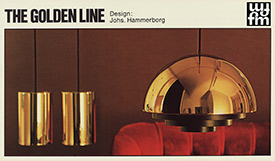 In the early years he produced an Orient Minor from solid sterling silver, which retailed at more than 10 times the price of other models in the line. In the mid 1970s there were special chrome-plated and 24 carat gold-plated editions of several popular Fog & Mørup lines, including his own Milieu and Sektor. Hammerborg also designed more than a dozen glass lamps with beautifully simple sculptural forms, which were produced for Fog & Mørup by Holmegaard glassworks. And finally, in the late ’70s he designed several lamps in plastic, including two pendants – the Plain and the Single.
In the early years he produced an Orient Minor from solid sterling silver, which retailed at more than 10 times the price of other models in the line. In the mid 1970s there were special chrome-plated and 24 carat gold-plated editions of several popular Fog & Mørup lines, including his own Milieu and Sektor. Hammerborg also designed more than a dozen glass lamps with beautifully simple sculptural forms, which were produced for Fog & Mørup by Holmegaard glassworks. And finally, in the late ’70s he designed several lamps in plastic, including two pendants – the Plain and the Single.
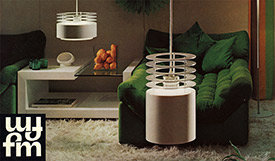 Hammerborg’s lighting designs for Fog & Mørup won numerous prizes, among them a Buenos Aires Centro Investigacion de Diseno Industrial first prize in 1965 for the Nova and six iF International Forum Product Design Awards in 1969 and 1970 for the Classic, Tunika, Saturn, Diskos, and Hydras I and II.
Hammerborg’s lighting designs for Fog & Mørup won numerous prizes, among them a Buenos Aires Centro Investigacion de Diseno Industrial first prize in 1965 for the Nova and six iF International Forum Product Design Awards in 1969 and 1970 for the Classic, Tunika, Saturn, Diskos, and Hydras I and II.
He also collaborated with other designers in adapting their designs to meet F&M’s production requirements, working closely with Holmegaard glassworks during the development of both his own glass lamps and those by Jacob E Bang, and again with Royal Copenhagen during F&M’s collaborations with the porcelain factory. 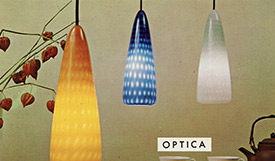 He was especially closely involved in the development of Sidse Werner & Leif Alring’s parachute-like Formland lights (Hammerborg was himself a keen skydiver at international championship level), to the extent of piloting the plane used for the promotional photoshoot.
He was especially closely involved in the development of Sidse Werner & Leif Alring’s parachute-like Formland lights (Hammerborg was himself a keen skydiver at international championship level), to the extent of piloting the plane used for the promotional photoshoot.
Hammerborg left Fog & Mørup in 1980 to set up his own lighting design business. His departure coincided with Fog & Mørup’s demise as the company underwent a series of mergers, first with Lyfa and later with Horn, at which point the F&M brand ceased to exist altogether. Hammerborg died in a skydiving accident on the island of Bornholm on 23 July 1982.
© 2011 Classic Modern. All rights reserved.
